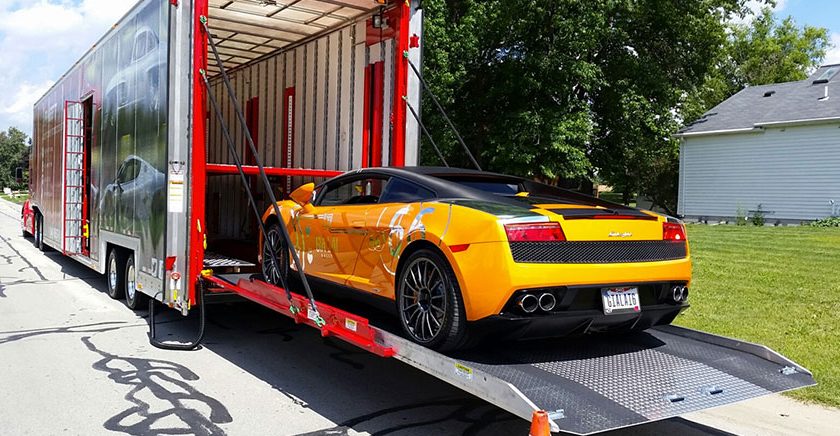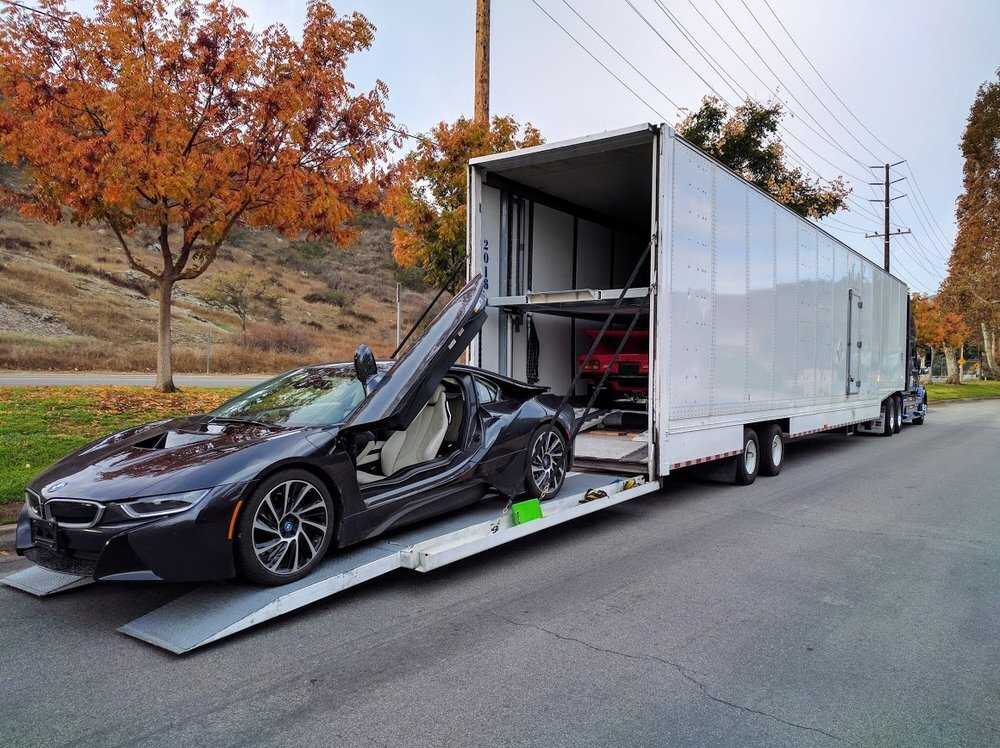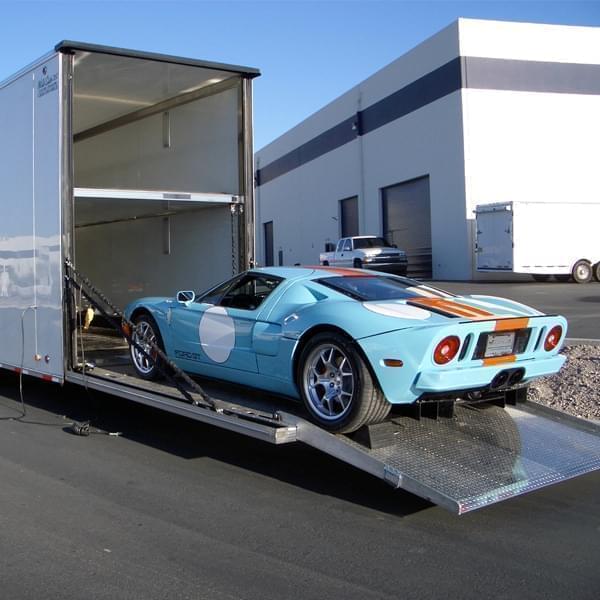How Much Does It Cost To Ship a Classic Car?
Shipping a classic car requires careful consideration and attention to ensure its safe transportation. When it comes to the cost of shipping a classic car, several factors come into play. While it is challenging to provide an exact figure without specific details, we can discuss the key elements that influence the overall cost.
Firstly, the distance of transportation plays a significant role. The longer the distance, the higher the shipping cost will likely be. Additionally, the pickup and delivery locations can affect the price, especially if they are in remote or less accessible areas.
The size and weight of the classic car also contribute to the cost. Larger and heavier vehicles may require specialized equipment or carriers, resulting in higher shipping fees.
The chosen shipping method is another factor. Enclosed transport, which provides added protection from external elements, tends to be more expensive than open transport, which exposes the car to the elements.
Insurance coverage is essential when shipping a classic car. Ensuring the vehicle is adequately insured during transportation will add to the overall cost but provides peace of mind in case of any unforeseen incidents.
Lastly, market demand and seasonal fluctuations can impact the cost. High-demand periods, such as peak moving seasons, may result in higher prices due to increased competition.
To determine the exact cost of shipping a classic car, it is recommended to obtain quotes from reputable car shipping companies. They will consider these factors and provide a tailored estimate based on your specific requirements. Remember to prioritize the safety and reliability of the shipping company to ensure a smooth and secure transportation experience for your cherished classic car.
How To Ship a Classic Car

Shipping a classic car requires meticulous planning and attention to detail to ensure its safe and secure transportation. Here is a guide on how to ship a classic car effectively.
- Research and Select a Reputable Shipping Company: Look for experienced car shipping companies with a proven track record in transporting classic vehicles. Read customer reviews, check their insurance coverage, and ensure they have expertise in handling vintage cars.
- Choose the Right Shipping Method: Depending on your budget and the level of protection desired, opt for either enclosed transport or open transport. Enclosed car transport provides added protection from weather conditions and road debris, while open transport is more cost-effective.
- Prepare the Classic Car: Thoroughly clean the car, both inside and out, and document its current condition with photographs. Remove any personal items and detachable accessories. Ensure the vehicle is in good working condition, including checking the battery, fluids, and tire pressure.
- Secure Proper Insurance: Confirm that your classic car is adequately insured during transportation. Verify the coverage details and understand any limitations or requirements.
- Obtain Necessary Documentation: Gather all relevant documents, including the vehicle’s title, registration, and insurance information. You may also need a notarized letter of authorization if someone else is transporting the car on your behalf.
- Schedule Pickup and Delivery: Coordinate the pickup and delivery details with the shipping company. Ensure they have clear directions and contact information for both locations.
- Track and Inspect: Stay in touch with the shipping company throughout the process and track the progress of your classic car. Upon delivery, inspect the vehicle for any damages or discrepancies and document them immediately.
By following these steps and working with a reputable shipping company experienced in handling classic cars, you can ensure a smooth and secure shipping experience for your beloved vintage vehicle.
What Does It Cost To Ship a Classic Car?

When it comes to shipping a classic car, the cost can vary depending on several factors. Understanding these factors will help you estimate the expenses associated with transporting your cherished vehicle.
The distance of transportation is a primary consideration. Longer distances typically result in higher classic car transport costs due to fuel expenses and the time involved in transporting the vehicle.
The size and weight of the classic car also play a role. Larger and heavier vehicles may require specialized equipment or carriers, which can increase the overall cost.
The chosen shipping method is another factor. Enclosed transport, which offers enhanced protection from weather and road debris, is generally more expensive than open transport, which exposes the vehicle to external elements.
Insurance coverage is essential. Ensuring your classic car is adequately insured during transit adds to the overall cost, but it provides peace of mind in case of any unforeseen incidents.
Market demand and seasonal fluctuations can impact pricing. During peak seasons or periods of high demand, prices may rise due to increased competition for carrier availability.
To determine the exact cost of shipping your classic car, it is recommended to obtain quotes from reputable car shipping companies. They will consider the specific details of your shipment, such as the distance, vehicle size, shipping method, and insurance coverage, to provide an accurate estimate.
Remember to prioritize the safety and reliability of the auto transport company when considering costs. A reputable company with experience in handling classic cars will ensure your beloved vehicle is transported securely and with utmost care.
What Affects Classic Car Shipping Costs?

When it comes to shipping a classic car, several factors influence the overall cost. Understanding these factors can help you estimate and plan for the expenses associated with transporting your cherished vehicle.
- Distance: The distance of transportation is a significant factor. Longer distances generally result in higher shipping costs due to fuel expenses and the time involved in transporting the vehicle.
- Vehicle Size and Weight: The size and weight of the classic car play a role in determining the cost. Larger and heavier vehicles may require specialized equipment or carriers, which can increase the overall shipping expenses.
- Shipping Method: The chosen shipping method impacts the cost. Enclosed transport, which offers superior protection, tends to be more expensive than open transport, where the vehicle is exposed to the elements during transit.
- Insurance Coverage: Insuring your classic car during transportation is crucial. The insurance coverage you choose for your vehicle will affect the cost, as more comprehensive coverage typically comes at a higher price.
- Market Demand and Seasonal Factors: Pricing can be influenced by market demand and seasonal fluctuations. During peak seasons or periods of high demand, prices may be higher due to increased competition for carrier availability.
- Additional Services: Any additional services requested, such as door-to-door delivery or expedited shipping, can impact the overall cost.
- Condition of the Vehicle: The condition of the classic car may also affect the cost. If the vehicle is not in running condition, special equipment or handling may be required, leading to higher shipping expenses.
To get an accurate estimate of the shipping cost for your classic car, it is recommended to request quotes from reputable auto transport companies. They will consider these factors, along with your specific requirements, to provide a tailored estimate for transporting your beloved classic vehicle safely and securely.
Types of Classic Car Transport

When it comes to transporting classic cars, there are different methods available to cater to various needs and budgets. Here are the types of classic car transport commonly used:
- Enclosed Transport: This method offers the highest level of protection for classic cars. The vehicles are transported in enclosed trailers or shipping containers, shielding them from weather conditions, road debris, and potential damage. It is ideal for high-value or delicate classic cars.
- Open Transport: Open transport involves transporting classic cars on open car carriers. While the vehicles are exposed to the elements, this method is cost-effective and widely used. It is suitable for classic cars that are in good condition and can withstand open-air exposure.
- Flatbed Transport: Flatbed transport involves using a flatbed truck to transport classic cars. It provides flexibility in loading and unloading vehicles, making it suitable for non-running classic cars or those with low ground clearance.
- Driveaway Service: With this option, a professional driver is hired to drive the classic car to its destination. This method can be cost-effective, but it involves some level of wear and tear on the vehicle during the journey.
Consider your classic car’s value, condition, and specific requirements when choosing the type of transport. Ensure you select a reputable and experienced classic car transport provider that specializes in handling vintage vehicles. By selecting the right type of transport, you can ensure the safe and secure transportation of your beloved classic car.
How To Prepare Your Classic Car for Shipping

Preparing your classic car for shipping is crucial to ensure its safe transportation and preserve its condition during the journey. Here are some essential steps to follow when getting your classic car ready for shipping:
- Clean and Document: Thoroughly clean both the interior and exterior of your classic car before shipping. Take detailed photographs to document its current condition. This documentation will serve as a reference in case of any damage that may occur during transit.
- Remove Personal Items: Clear out all personal belongings from the vehicle. This includes any valuables, custom accessories, or removable parts. Leaving the car empty ensures safety and prevents any potential damage or loss.
- Perform Maintenance Checks: Make sure your classic car is in good working condition before shipping. Check the fluid levels, tire pressure, and battery. Address any mechanical issues or leaks, and top off the fuel tank to around a quarter or an eighth of its capacity.
- Disable Alarm Systems: If your classic car has an alarm system, disable it to prevent unnecessary activation during transportation. This will avoid draining the battery or causing disruptions during transit.
- Secure Loose Parts: Secure any loose or detachable parts of your classic car. Remove or secure items like antennas, spoilers, or side mirrors to prevent damage during transit.
- Notify the Shipping Company: Provide accurate information about the specific requirements of your classic car to the shipping company. Share any unique handling instructions or mechanical considerations that need attention during transportation.
- Review Insurance Coverage: Verify your classic car’s insurance coverage during transit. Understand the policy terms, limitations, and coverage for any potential damages that may occur.
By following these steps, you can ensure that your classic car is properly prepared for shipping. Taking the time to prepare your vehicle adequately will help minimize the risk of any damage and ensure a smooth transportation experience for your beloved classic car.
Door-to-Door Shipping Prices for Classic Cars

When it comes to shipping classic cars, door-to-door classic car transport service offers convenience and peace of mind. However, the cost of door-to-door shipping for classic cars can vary based on several factors.
Distance plays a significant role in determining the price. The longer the distance, the higher the shipping cost will be. Additional expenses may arise if the pick-up or delivery locations are in remote or hard-to-access areas.
The size and weight of the classic car also impact the price. Larger or heavier vehicles may require special equipment or carriers, resulting in higher shipping fees.
The type of transport chosen affects the cost as well. Enclosed transport, providing maximum protection, is generally more expensive than open transport.
Seasonal factors can also influence prices. During peak seasons or holidays, when demand is higher, shipping costs may increase due to limited carrier availability.
Insurance coverage is essential for protecting your classic car during transportation. Ensuring your vehicle has sufficient insurance coverage may impact the overall cost.
To get an accurate estimate for door-to-door shipping of your classic car, it is recommended to obtain quotes from reputable best auto transport companies. They will consider the specific details of your shipment, such as distance, vehicle size, transport type, and insurance coverage, to provide a tailored estimate.
When choosing a door-to-door shipping service for your classic car, prioritize the reputation and reliability of the shipping company. Selecting an experienced and reputable provider will ensure the safe and secure transportation of your cherished classic car, providing you with peace of mind throughout the process.
Open vs Enclosed Auto Transport Costs for Classic Car Shipping

When it comes to shipping classic cars, choosing between open and enclosed auto transport methods is an important decision that also affects the overall cost. Understanding the differences in costs between open and enclosed transport will help you make an informed choice.
Open auto transport is the more common and cost-effective option. Vehicles are transported on open car carriers, exposed to weather conditions and road debris. Due to the larger capacity of open carriers and higher demand, the cost per vehicle is generally lower compared to enclosed shipping. Open transport is suitable for classic cars that are in good condition and less susceptible to potential exterior damage.
On the other hand, enclosed auto transport provides enhanced protection for classic cars. Vehicles are shipped in enclosed trailers or containers, shielding them from weather elements and road debris. This method offers a higher level of security and is ideal for valuable, delicate, or rare classic cars that require extra care and protection. However, the added level of protection comes at a higher cost compared to open transport.
The cost of enclosed transport is typically higher due to factors such as the limited capacity of enclosed trailers, the additional security measures provided, and the specialized handling required. Classic car owners who prioritize maximum protection and peace of mind often opt for enclosed transport despite the higher cost.
To determine the exact cost, it is recommended to obtain quotes from reputable car shipping companies for both open and enclosed transport options. Consider your budget, the value of your classic car, and the level of protection required to make an informed decision based on your specific needs.
What Is the Cheapest Way To Ship a Classic Car?

When it comes to shipping a classic car, finding the most cost-effective option is essential for many car owners. While the exact cost may vary based on several factors, there are some strategies to consider to help you find the cheapest way to ship your classic car.
One of the most cost-effective options is open auto transport. This method utilizes open carriers to transport vehicles, making it more affordable than enclosed transport. Open carriers have larger capacity and can accommodate multiple vehicles, which helps to reduce costs. This option is suitable for classic cars that are in good condition and less susceptible to potential exterior damage.
Another way to save on shipping costs is to plan ahead and book your shipment in advance. Last-minute bookings may incur higher fees due to limited availability and increased demand.
Consider the flexibility of delivery options as well. Terminal-to-terminal shipping, where you drop off and pick up your vehicle at designated terminals, can be more cost-effective compared to door-to-door shipping.
Additionally, timing can play a role in cost savings. Shipping during off-peak seasons or non-holiday periods may result in lower prices due to decreased demand.
It is also recommended to obtain multiple quotes from reputable car shipping companies to compare prices and services. While cost is an important consideration, be sure to assess the reputation, reliability, and level of customer service provided by the shipping company.
By considering these strategies and making informed choices, you can find the cheapest way to ship your classic car without compromising the safety and security of your beloved vehicle.
Choose the Best Classic Car Shipping Companies

When it comes to shipping your beloved classic car, choosing the right shipping company is crucial. Here are some key factors to consider when selecting the best classic car shipping companies:
- Reputation: Look for companies with a strong track record and positive customer reviews in the classic car shipping industry.
- Experience: Prioritize companies with extensive experience in transporting classic cars, as they will have the necessary expertise and knowledge to handle your vehicle with care.
- Specialization: Select companies that specialize in classic car shipping, as they will understand the unique requirements and challenges associated with vintage vehicles.
- Insurance: Ensure that the shipping company provides comprehensive insurance coverage specifically tailored to classic cars, offering protection throughout the transportation process.
- Secure Facilities: Choose companies that have secure storage facilities, providing a safe environment for your classic car before and after transportation.
- Customized Services: Look for companies that offer personalized services to accommodate your specific needs, such as enclosed transport or expedited shipping options.
- Transparent Pricing: Opt for companies that provide clear and transparent pricing, with no hidden fees or surprises.
- Excellent Customer Service: Select companies with a reputation for outstanding customer service, as they will prioritize clear communication, responsiveness, and attentiveness to your concerns.
By considering these factors, you can choose the best classic car shipping company that will ensure the safe and secure transportation of your prized vintage vehicle.
Why Should You Choose “American Auto Transport” To Transport Your Classic Car?

When it comes to transporting your classic car, “American Auto Transport” stands out as a top choice for several compelling reasons.
Firstly, our company has built a solid reputation in the industry. With years of experience and a proven track record, we have garnered positive customer feedback and established ourselves as a reliable and trustworthy classic car shipping provider.
Our expertise in classic car transport is unmatched. We understand the unique requirements and challenges associated with vintage vehicles. From handling delicate exteriors to ensuring secure transportation, our team has the knowledge and experience to deliver your classic car safely to its destination.
At “American Auto Transport,” we prioritize the safety and security of your classic car. We offer specialized classic car transport services, including enclosed transport, to provide maximum protection from the elements and potential damage during transit. Our dedicated team takes meticulous care in handling and securing your classic car throughout the entire transportation process.
Customer satisfaction is our utmost priority. We pride ourselves on providing exceptional customer service, with responsive and knowledgeable representatives who are ready to address your concerns promptly. We prioritize clear communication and keep you informed every step of the way.
Finally, we offer competitive pricing without compromising on the quality of our services. We provide transparent and competitive quotes, ensuring you receive excellent value for your investment.
Choosing “American Auto Transport” means selecting a reputable company with expertise in classic car transport, outstanding customer service, top-notch safety measures, and competitive pricing. Trust us to handle your classic car transportation needs with professionalism and care, ensuring a smooth and secure journey for your cherished vintage vehicle.
FAQs

How Long Does It Take To Transport Classic Cars Across the Country?
The time it takes to transport classic cars across the country can vary depending on several factors. On average, it can take anywhere from one to two weeks for a classic car to be transported across the country. The duration is influenced by factors such as the distance of the journey, the specific pickup and delivery locations, the chosen shipping method, and any potential delays due to weather or unforeseen circumstances. It’s important to work with a reputable classic car transport company that can provide you with an estimated timeline based on your specific requirements. By planning ahead and choosing a reliable shipping provider, you can ensure the smooth and timely transport of your classic car across the country.
How To Avoid Damage During Vintage Vehicle Shipping?
To avoid damage during vintage vehicle shipping, certain precautions should be taken. Firstly, choose a reputable and experienced shipping company that specializes in transporting classic cars. Request enclosed transport to provide maximum protection from weather and road debris. Thoroughly document the vehicle’s condition with photographs before shipping. Ensure that all loose parts are secured or removed, and the fuel tank is kept at a quarter or less of its capacity. Disable any alarms or anti-theft devices. Finally, communicate any specific handling instructions or concerns to the shipping company. By following these steps and entrusting your vintage vehicle to professionals, you can minimize the risk of damage and ensure a safe and secure transportation experience.
How To Calculate the Cost per Mile To Ship a Car?
Calculating the cost per mile to ship a car involves considering several factors. Start by obtaining a quote from a reputable car shipping company, which will typically provide a total cost for the transportation. Next, determine the distance in miles between the pickup and delivery locations. Divide the total cost by the distance in miles to calculate the cost per mile. For example, if the total cost is $1,000 and the distance is 500 miles, the cost per mile would be $2. This calculation can help you understand the relative cost of shipping a car based on the distance traveled. Keep in mind that the cost per mile may vary depending on additional factors such as the type of vehicle, the chosen shipping method, any extra services required, and market conditions. Consulting with a shipping company will provide you with a more accurate estimate and help you determine the cost per mile for your specific car shipping needs.

